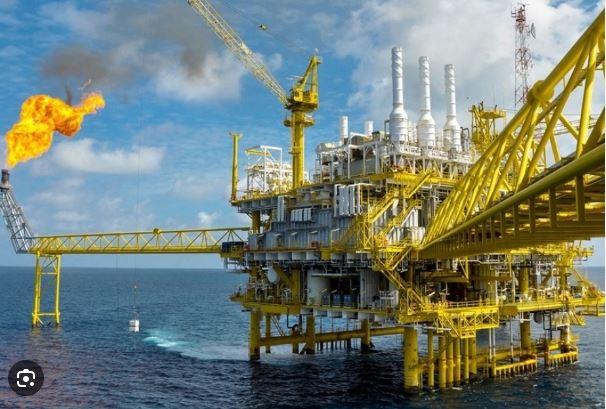Can Azerbaijan become the new Gazprom for Europe?

| Plamen Petrov |
Ney York’s Manhattan is the world’s most famous hub of business and wealth. Thousands of miles from the American megalopolis, on the Southern Caspian Sea, lies an area the shape and size of Manhattan, which in turn is the center of Azerbaijani’s gas business – it is Shah Deniz gas field.
The huge natural gas filed is located under the sea bottom, 70 km south of Azerbaijani capital, Baku. Here, the Caspian Sea is relatively deep – 600 meters, so extracting the gas is not easy task. Not surprisingly, it only began after the collapse of the Soviet Union, when Azerbaijan became an independent state and could invite Western companies to come with technology and capital to invest in the oil and gas sector.
The contract to develop the Shan Deniz field was signed in 1996. It mirrored the complex geopolitical realities in the South Caucasus at that time. The largest stake in the gas project went to British BP (at that time British Petroleum), alongside it was another European giant in this business – the Norwegian Statoil (after 2018 it became Equinor). Azerbaijani state oil company SOCAR was also involved in the project, as was the Turkish State Oil Company (TPAO).
Then Azerbaijani president Heydar Aliyev incorporated the interests of Azerbaijan’s two powerful neighbors into the project – Iran and Russia, and Lucoil and Iranian state oil company NIOC also became shareholders in Shah Deniz. Later Statoil withdrew from the consortium, and to date, BP holds the largest stake – 29,99%, followed at 19,99% by Lucoil, whose founder and largest shareholder Vagit Alekperov is a Russian businessmen with Azerbaijani origin. The Turks and Iranians remain in the project, which some time ago required the US government to grant special permission to exempt the Shah Deniz consortium from the sanctions against Iran.
After Shah Deniz was proven in 1999 to contain about 1,2 trillion cubic meters of gas, the question was how to bring this wealth to the world markets. Azerbaijan is landlocked, and its neighbors – Russia to the north, Iran to the south, and Turkmenistan to the east across the Caspian Sea – are among the countries with the world’s largest gas reserves, so you cannot sell them anything they have. The only option is for Azeri gas to go west – through Georgia to Turkey and Europe. To this end, the South Caucasus gas pipeline was built, starting from Baku, crossing the territory of Azerbaijan and Georgia and reaching Erzurum in Eastern Turkey. The route is almost 1000 km long, and the first volumes of natural gas went through it in 2007.
While the markets of Georgia and especially Turkey were sufficient for the gas from the first phase of the Shah Deniz development, new customers, mostly in Europe – were now needed for the second phase of the field exploitation. Azerbaijan took the initiative to build the Trans-Anatolian pipeline, which crosses the whole Turkey from east to west and reaches the European continent. And from there to where?
Several competing projects have been developed for the European route of Azerbaijani gas – Nabucco, South-East European pipeline, Poseidon, Turkey-Greece-Italy interconnector. Ultimately, however, the most economically viable option was chosen – the Trans-Adriatic pipeline, which transfers Azerbaijani gas through Northern Greece, Albania, the Adriatic Sea, and exits to Italy. As mentioned above BP, Italian Snam, Azerbaijani’s SOCAR, Spain’s Enagas, and the Brussels-registered gas operator Fluxys have equal shares of 20% each. This diverse consortium composition shows that Azerbaijani gas will reach the Balkans and Italy and further afield Western European countries.
On 30 December 2020, the first batch of Azeri gas reached Italy. Thus, the gas route consisting of three consecutive pipelines totaling 3300 km became operational. More than $33 billion has been invested in their construction and the second phase of the Shah Deniz development – a huge sum that seemed unrecoverable given the low gas prices in 2020. But thing had changed very quickly.
As early as the autumn of 2021, gas prices went up sharply. It was followed by the Russian invasion in Ukraine and the termination of Gazprom supplies to European countries. Gas prices skyrocketed as demand far exceeded supply. Azerbaijan was the first destination Europeans turned to in search of replacement for pipeline supplies from Gazprom. In July 2022 European Commission President Ursula von der Leyen visited Baku and signed a memorandum with President Ilham Aliyev to double gas supplies from Azerbaijan by 2027.
Doubling supplies sounds good, but how much gas does Azerbaijan have, and what volumes can it direct to Europe? The answer to both questions is – not very much. Azerbaijani’s gas reserves are about 15 times smaller than Russia’s. The country contributes only 0.8 percent of the world’s total production, there is also a substantial domestic consumption. So, for now, only the Shah Deniz natural gas production goes for export.
In 2022, 22,3 bcm were exported from Azerbaijan, and a slight increase to 24,5 bcm is projected for 2023. Note, however, that less than half of Azerbaijan’s gas (48%) goes to Europe. Turkey accounts for 41% and Georgia for 11%.
When Ursula von der Leyen negotiated the doubling of Azeri gas supplies to the EU in 2022, the base was 10 bcm/year. For 2022, it reached 11,4 bcm, and in 2023 it will be 12 bcm. Azerbaijan has other smaller gas fields that could supplement Shah Deniz’s export capacity, but their development is yet to be completed. The Absheron field became operational this year, but so far, production is small – 1,5 bcm/year, possible reaching a maximum of 6 bcm. So, Azerbaijani gas exports to Europe will grow but it will be difficult to reach the target of 20 bcm per year.
Now, let us compare the figures for Azerbaijani gas imports into the EU with the volumes of Russian supplies that have been cut off. In 2021, Gazprom’s sales to Europe were 155 bcm – about 15 times what was coming from Azerbaijan. This year no more than 26-28 bcm of Russian pipeline gas will be delivered to the EU countries. The missing 130 bcm of Russian gas cannot be made up by 12 bcm from Azerbaijan. It is another matter that the EU has managed to sharply rose LNG imports and reduce consumption, allowing them to cope with the situation in the winter. So, the answer to weather Azerbaijan can become a new Gazprom regarding gas supplies to Europe is “no”. And there is no danger of the EU replacing one energy dependency with another.
At the same time, however, it should be taken into account that for countries with small gas markets like Bulgaria, Azerbaijani gas has brought relief and diversification of supplies. Shan Deniz gas already reached Romania and Moldova, and plans are to route it through Bulgaria to Serbia and Hungary. So, the prognosis is that the Azerbaijani-Europe gas link has yet to develop and strengthen.
 Latest news
Latest news Latest news
Latest newsIranian envoy: Next 3+3 meeting to be held in Turkey soon
19 July 2024 / 14:01
Armenian authorities probing military aircraft crash
19 July 2024 / 13:57
Georgian President asks Constitutional Court to repeal foreign agents law
15 July 2024 / 14:53
Armenia kicks off joint military exercise with U.S.
15 July 2024 / 14:48
Armenian Foreign Minister left for New York
15 July 2024 / 14:44
Macron reaffirms support for Armenia-Azerbaijan dialogue at meeting with Erdogan
12 July 2024 / 13:33
Masoud Pezeshkian to be inaugurated as Iran's president in three weeks
11 July 2024 / 11:04
Mirzoyan, Blinken discuss bilateral issues in Washington
10 July 2024 / 14:30
U.S. continues to work for diplomatic resolution between Armenia, Azerbaijan
10 July 2024 / 14:19
Armenian FM to travel to Washington
09 July 2024 / 13:33
Reformist Pezeshkian wins Iran's presidential race
08 July 2024 / 13:14
Armenian parliament speaker hails 'productive' talks with U.S. officials
05 July 2024 / 14:32
Astana hosting SCO+ summit with participation of Aliyev and Erdogan
04 July 2024 / 14:40
Armenia-Azerbaijan talks a priority for U.S. – State Dept
04 July 2024 / 13:37
Why does U.S. Congress delegation arrive in Armenia?
03 July 2024 / 13:44

 27 July 2024 / 02:39
27 July 2024 / 02:39





